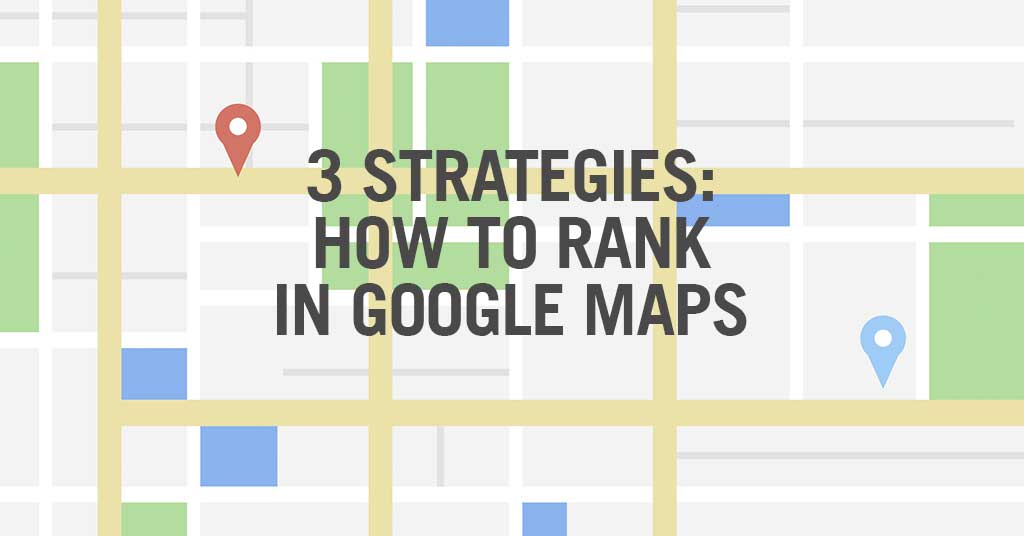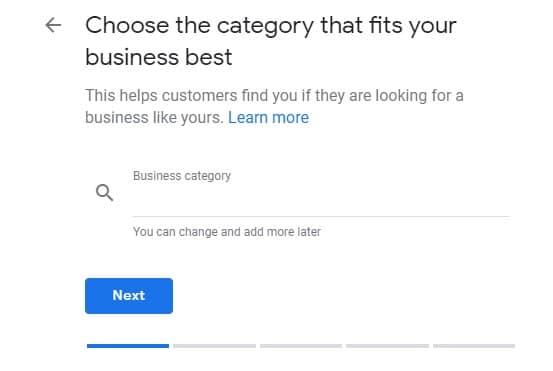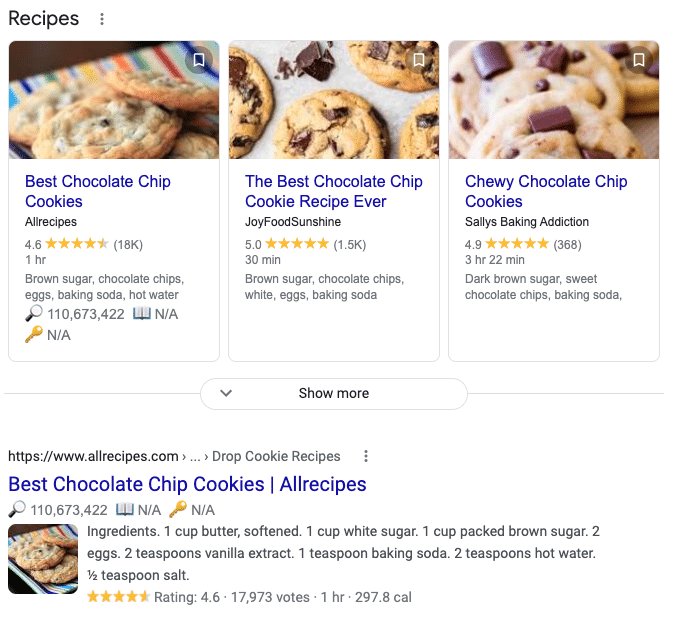3 Major Strategies on How to Rank in Google Maps

by Nick Kastner, Director of Brand and Digital Strategy
Since I took my first job in marketing in 2002, marketers have been trying to figure out how to improve their company’s, client’s or organization’s rankings in search engines – particularly Google. Today, increasing your rankings in Google – and particularly how to rank in Google Maps for local businesses – is more important than ever!
Let’s start here, dependent on whose research you believe, the first organic search result has an average click through rate (CTR) of at least 25% (and as a high as 43.32%). According to SmartInsights – the first five organic search results for any given search account for 67.6% of clicks in Google!
So, how important is your Google Maps ranking if you’re a local service area business or company? The answer is simple – very important! And if you’re a small business with one location, or a business with hundreds or even thousands of locations, ranking higher on Google Maps is one of the ways that you can rapidly build your business.
Going back to the topic of this article – how do you rank in Google Maps in 2021? Well, the answer is both simple and complicated. While we at Forum obviously offer these types of services, not every small business can afford – or even wants – to partner with a marketing agency to tackle some or all of their marketing tasks. And, if you’re a client of ours – you know that we’re transparent about what we do. So, here is our methodology for ranking higher in Google Maps.
Strategy #1: Building your Google My Business (GMB) Profile
Adding and Verifying Your Business on Google
The very first thing that you must do to be found in the Google Maps search results is to actually add your business and become verified. The process is fairly simple. Visit this link and complete the process . Google has provided great resources on the process as well with these informative videos.
Adding / Claiming Your Business:
Verifying Your Business:
Now, I do want to point out one specific – but very important thing – the NAP. NAP – in these terms – stands for “Name, Address, and Phone Number.” It’s critically important that your Business Name, Address, and Phone Number match across various websites. For instance, the Name your company is listed under on Google – should match the way you’ve listed your company on a website like Alignable, or Yelp, or HomeAdvisor, or TripAdvisor, or any industry-specific directory, website, or even on social media. That consistency helps Google better understand your legitimacy – and believe it or not – it also can directly affect your rankings.
Complete Profiles
A truly complete profile in Google My Business would include business hours, website links, and most importantly the primary category and subcategories for your business. Having a complete profile is important because it shows Google you’re putting forth the effort – and it’s actually part of the algorithm itself.

Now, when it comes to categories, make sure to choose the category that truly represents your business. This can be difficult if your business actually operates in more than one category. We would recommend choosing the one that is most competitive as your primary category and any ancillary services as your secondary categories. Also, dependent on how your business operates – you may even have two or more GMB listings for one location but ONLY if this makes sense. To do so, and to follow Google’s Terms of Service, those separate listings should have separate business licenses, separate logo demarcations on the building, and must see customers at that given location. Certain large retailers have multiple listings for a single location (like a Walmart who has a Garden Center, a Bakery, etc. all as separate listings in one location) but whether that truly follows Google’s Terms of Service is debatable at best.
If your business operates in more than one primary category, and they are all very competitive, you have to become more clever in your marketing efforts – primarily by implementing the other recommended strategies.
Questions and Answers
One of the most powerful tools in GMB for customer service is the ability for a consumer to post a question and for the business to respond. Believe it or not, this Q&A is also part of the algorithm. Why? Well, if a consumer posts a question and no one responds – it shows Google that you are inactive and it can negatively affect your ranking in the Google Maps listing. So, we strategically recommend that clients create their own list of FAQs that are posted as Questions and Answers to kick-start the process. This shows Google that you do care about the user experience, and even if you post your own Questions and Answers – it can certainly help with increasing rankings – especially if the questions are related to your primary and secondary category offerings.
Reviews
Reviews are also a critical piece to this equation. Every business wants all “5-star reviews” – so there are ways to go about driving reviews from happy customers. But, no matter the review, make sure to respond within GMB – again to show Google that the account is actively being managed.
Posts
Just like Facebook, Instagram, or other social media channels, you can post to your Google My Business account. We recommend a minimum of posting once per week through GMB.
Quick Tip: While this isn’t related to posts – having images in your GMB account is very important. We recommend using standard SEO sort of protocol here and naming your image files with names that describe your image and if possible – with your product/service category (like gainesville-ga-bakery-new-location.jpg). While it’s a minor signal – it can boost your rankings slightly. Also, make sure to post images that are relevant to the area or your target area for increased exposure.
Strategy #2: Citations and Backlinks
Citations
No, this is not a parking ticket, nor is it part of a college paper – although it sounds like it could be both 🤔. A citation is simply a mention of your brand online that typically lists your business’s name, address and phone number (NAP) as well as links to your website, social media, and may even accept reviews from customers. Most of these are found on website directories, localized, national, etc. across the web – and can even be specialized to your industry (glass.com is an example). Think about your local chamber of commerce – if you’re a member they typically have a members’ directory online which has a link back to your website as well as company information.
Dependent on your company, there can be 100s, if not 1,000s of opportunities for local citations. These can be managed manually or can be automated through systems called data aggregators that can also post on your behalf. Costs for these services vary wildly. There are even some aggregators that will help with voice search results from tools like Amazon Alexa, Siri, and others. We at Forum spoke to one company who wanted nearly $1,000/month just to manage these for a small business! But, when working through the time and the numbers – the costs do make sense. The Moz Local team did a study on local citations and found that the average business has between 3,500 – 10,000 duplicate local business listings – and managing those could take 44 weeks of the work year to clean up! We at Forum agree with Moz in that there are some major players (Axciom, Apple Maps, Bing, Citygrid, Facebook, Factual, Foursquare, DataAxle, Localeze, Superpages, Yahoo!, YP, and Yelp) that really matter and all the others can be considered over time.
So why should you care? Well, as discussed, GMB is concerned in proving that you are who you say you are. And, Google wants proof that you are in the right business category. So, making sure that your business name, addresses, and phone numbers (NAP) all match across platforms is of critical importance. Managing these citations can add valuable backlinks from high domain authority websites, but also prospectively drive referral traffic for solid leads.
To clean these up, do a Google search for your brand name and your address (or different addresses for each office). What do you find? Some of those websites will offer a free account and ability to “claim a business” if it’s present – or you can create an account to add the link. Make sure to be consistent in the name of your company, the way you discuss your company, addresses and URLs. There are tons of tools out there to help with this process or it can be done manually. Here at Forum, we’ve done it a variety of ways. For some, we’d recommend using Moz Local to help and for others, we manage them directly.
Also, I will note here that there are some sites that are “pay to play” or, that is, you have to pay them to get a link. Google traditionally has frowned upon this practice – however there are a few directories that work like this that Google still values. We tend to recommend against participating in this strategy – but that doesn’t mean it’s not a strategy.
Backlinks
This is really the “magic” that most SEO companies offer – the ability to build backlinks. Most businesses today can sort out how best to produce content that works for their audience and that answers their most pressing questions. But, those backlinks – unless you get lucky from a viral standpoint – can seem like an impossible task.
The “low-hanging” fruit of the SEO world are the citations we mentioned above. Those are usually easy to get and simply take time. Other backlinks are more difficult. As a digital marketer, I’m always looking for better ways to get high domain authority (that is popular websites with high quality content) to link back to my clients’ websites. This can be in a killer press release, requests to guest post on another website’s blog, or all sorts of other strategies. One strategy we’ve found helpful for really good content is syndication. Content syndication is simply a third-party website re-posting your content. This can be a blog article, an infographic, a press release, or even a video. It’s sort of a recycling technique for content – a website who is desperate for content gets awesome content for their site and your website gets free exposure for giving them the content (and backlinks). It can be a win-win. It’s also important to note that you are listed as the primary source and while the content you’re posting is duplicate content on the web – the other website should use a canonical tag (that’s a story for another day) to note that you are the original source. Outbrain published a great article on how syndication works. This is something we actively do for our clients.
Strategy #3: On-Site SEO
On-site or on-page search engine optimization efforts are a critical part of your overall marketing efforts. They also have a direct impact on your Google My Business ranking. We work with clients to best optimize and build strategies to honestly give the people what they want. Your goal in SEO is really to give the consumer a response to their query. For instance, we recently wrote an article for a client called “How does an HVAC system work?” Why? Because they’re an HVAC company and people are curious about how the system works. We want to answer the questions that are being asked.
So, if you want to tackle this on your own, there are a few things you can do. First, make sure that your homepage (and really every page) has your location and/or NAP in the footer or in the language on the page. If Google doesn’t know where you’re located or what area you want to provide services…then it doesn’t know in what areas you want to rank. Second, Google uses your website as a tool to determine what topics your site should rank for in GMB. This includes your product and service category as well as how many others actively link to your website (which we’ll talk about later). So, be incredibly mindful of the copy and language you use on the website.
So, some specifics…
Page Elements You Can Modify
- Headings / H1s: The large font on the front of your page – that’s the text that Google first uses to understand what your page is all about. It should be used as what we refer to as a H1 – or Heading 1 – tag so Google understands “oh, so THAT’s what this page is about.” Many times, just being frank about what the page is about in those H1s can be the one thing that pushes your page to ranking on the first page – or in GMB.
- Title Tags: The title tag is actually what Google shows as the “blue link” in its results. What does yours say for each page? It should include your location, what you do, and the business name at a minimum.
- Meta Description & Keywords: These two fields – if you’re on WordPress – can easily be managed using the free Yoast SEO Plugin. The description field is the copy that Google displays (if it makes sense) underneath the title tag in its results and the keyword field – although not nearly as important as it used to be – tells Google what the page is about.
- Website: Other elements of the content can be optimized as well. For most of our ongoing clients, this is a never ending process – building strategic landing pages with supporting pages in the blog and/or as responses to answer users’ queries. Remember that Google in particular understands the intent and contextual meaning of a user’s search (creepy, we know) so being mindful that your website pages work to respond as answers to a question help you develop better content.
Schema

A few years ago, major players in the search engine industry including Google, Bing, Yandex, and Yahoo! collaborated to develop Schema.org. The purpose of Schema.org is to help businesses and website developers better provide information to search engines so they know what you do – and to help search engines provide better results. To do so, they developed new “Schema” markup elements that give search engines better information. It improves the way search engines display information but also gives businesses new tools to share that information. If you’ve ever done a search for a recipe or a book, you’ve seen schema in action. The “cards” are a result of schema markup on those pages – which provides a better user experience for the end user and helps Google better understand the purpose of your website’s pages or even your business.
How to Use Schema
The purpose of schema is to provide structure to the unstructured data of your website’s text. It helps you tell Google what your page is about. There are TONS of different things you can establish in your schema set up (here’s the full list), but there are some things that matter more than others.
One of those is the NAP. Remember how we discussed the NAP (Name, Address, Phone Number) for your GMB listing and for your citations? Well, the same applies here. You can actually send your NAP to Google using schema, as well as your business category, hours of operation, and other meaningful data. It varies by industry (and by page) but this is an easy way to prove to Google you are who you say you are.
Is that all?
Of course not – we could go over this for DAYS. But, this is at least a start. If you want more information, watch the Forum blog for tips from our digital marketing team or check out the awesome resources available @ Moz, Search Engine Journal, Search Engine Land, SEMRush, and our newest partner SERankings.
If this is something you just would rather pass to a professional – feel free to contact us @ 678-696-0706 on the bat phone or contact us via our contact form.
Back